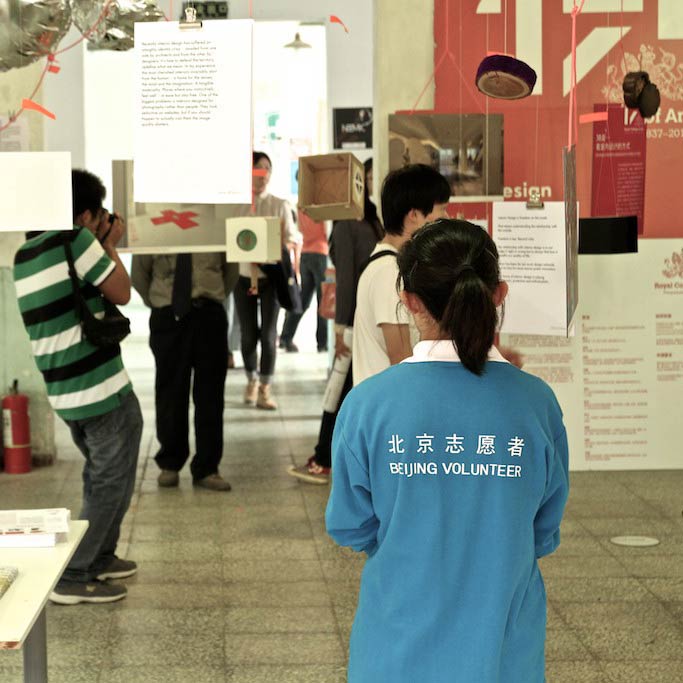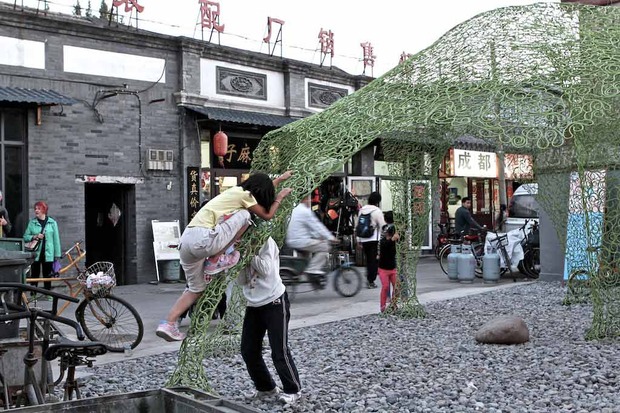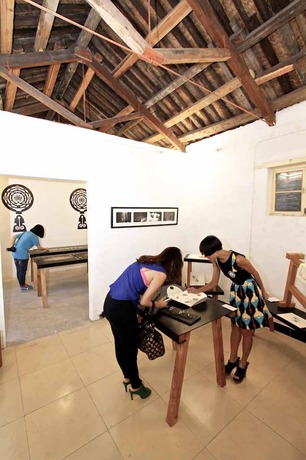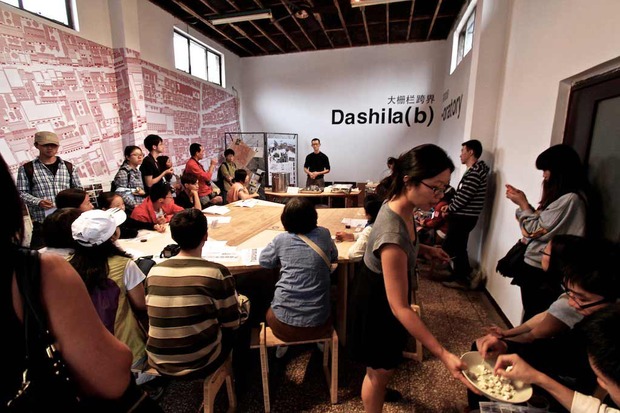Dashila(b)
The revitalization of Beijing’s oldest corridors


Dashilar is is one of the oldest and most famous “hutongs”, or alleyways, of Beijing, and probably one of the closest to pictures in our imagination of the old city—narrow streets, red lanterns, rickshaws and all kinds of Chinese paraphernalia. Located outside Qianmen Gate, South of Tian’anmen Square, the area became the city’s most vibrant commercial street during the Qing Dynasty. In the last 20 years, though, Beijing’s skyscraper fever has stalled the preservation of the area, leaving decaying infrastructures and widespread commercial vacancies threatening to sweep away the old glories of Dashilar.
Since last year Dashila(b) has been an open platform for elaborate restoration strategies to save the area and bring it back to its old splendor. Founded as a collaboration between Beijing Dashilar Investment Limited and Approach Architecture Studio, during the last two years Dashila(b) has been actively implementing an innovative urban curation program. In order to spur the area’s revitalization, Dashila(b) recently worked closely with Beijing Design Week in organizing a kermesse of workshops, forums, pop-up stores and cafes, art installations and parties, where international creatives meet the unique atmosphere the rich urban fabric of old Beijing.


From 27 September until 6 October 2012, Dashila(b) and Beijing Design Week brought more than 40 participants to the area, from both China and abroad. The epicenter of the project has been a former factory in Dalaiying Hutong, with satellite venues in the whole Dashilar area and in the newly renovated Yangmeizhu Street, which has been hosting a series of events and pop-up shops by e-commerce platform Nuandao. Among the stars of the event Campana brothers, Lumalu, Jellymon, CYJO and BCSXSY, GCDK De.Sign, Nuandao. We met with founding member and curator Neill Gaddes to learn more about Dashila(b)’s backstory and future goals.

How has it been working in Beijing’s oldest city area and dealing with an environment and local people who are mostly strangers to design? How did you manage to involve them in the project?
Dashila(b) was founded as an alternative revitalization model for Dashilar. The developer for the area, thankfully, found it unfeasible financially to completely demolish the area and build a faux-historic mall, as is the usual process for Old City revitalization in China. So we presented them with an alternative, more organic growth model for Dashilar that included, rather than excluded, the local residents. This is not necessarily what the residents want, as many had been holding on to dilapidated properties in the area in the hope of a big pay-out when the government implements its Tabula Rasa-style of development. With this no longer on the horizon, we are encouraging and helping residents to re-invest in their properties for the long-term future of the area. After years of ambiguity and opacity from the government, it was no surprise that they have been a little hesitant to believe us.
What Design Week does is it allows us to illustrate a provisional model of the future that they can be involved in with results thus far very encouraging. Seeing residents in pajamas enjoying beer and Chuan’r barbecue with the Design Week crowd during the opening street party was, in some ways, affirmation of this process. Furthering this we also held a series of workshops and events throughout the week targeted squarely at the resident’s interaction with Design. These were well attended and introduced how design could be in the resident’s lives without a patronizing or pretentious tone, which is usually symptomatic of this type of outreach.

How did you choose which projects and designers to work with?
Overall we were open to all submissions. Being more of an area-wide festival than discreet exhibition, we have the scope to be inclusive of different scales and directions participants want to take. However, we did develop some projects in collaboration with designers, architects and artists to specifically address Dashilar. These consisted of projects either documenting Dashilar life, collaborating with local business or searching for solutions to the area’s infrastructural and architectural issues. Rather than hold an open call, we worked with the participants with suitable proposals to help direct the project in a way that may benefit the local population. If the project fit remotely into those three vectors, we would approach them and inform them on situations in Dashilar that may be relevant, source funding (always a motivator) and let the participants get to it. The results of the process we are in the process of compiling into a toolbox for future use, encompassing everything from street furniture to mooncake moulds, personal histories to toilet rooftop gardens.

Are all the spaces meant to be only temporary stores or are there any designers moving to the area on permanent basis
Some of the spaces are purely temporary as they are earmarked for complete renovation in the near future, or already have a defined use to which we are working toward. One problem is that connecting the right designer or business to the right property is far more of an art than a science. Design Week gives us the opportunity to experiment in connecting these two elements, which is ultimately better for the area and for newcomers coming in. We do have participants from Design Week who have decided to stay, and we will work with them over the following months to find the best spaces and situations they can occupy for the benefit of the area. This is the crux of an urban curation rather than planning scheme—you must balance newcomers with local business and ensure there is a critical mass of certain programs to support each other, rather than just giving free reign to whoever’s first, or whoever has the most money, which will do nothing for the wider area.

Can design and creativity save the heritage of one of the oldest city area? What could be considered the tangible results of your efforts in the area?
In some ways design and creativity are the strongest both when it comes to ways to save Dashilar’s heritage in the physical form of the buildings and urban fabric, as well as intangible elements like culture, cuisine and craft. The workshops, events and projects all suggest ways in which design can take these cultural aspects, both positive and negative, associated with Dashilar and make them contemporary. Other direct examples of our harnessing creativity and design for the benefit of the area is Design Week itself as a political milestone and our Urban Curation plan. Other than the revitalizing effect it has on the area, Design Week actually plays a very direct role in preserving the traditional architecture.
China’s headlong rush in developing needs no introduction, but less known are the mechanisms and bureaucracy responsible for it. Each year, just like chief executives, party secretaries need to show that key objectives are met to ensure they rise within the administration. This is quite often the reason behind some of China’s empty ghost cities or, worse, shoddy developments. Very consciously we have used Beijing Design Week as a photo opportunity for the relevant officials that doesn’t involve excessive, poorly planned demolition and hurried, pastiche-ridden construction. Within our planning, one of the key actions has been to connect the right program with the right building, so as to ensure a sustainable and, in some ways, more authentic preservation of the building, because the underlying architecture fits the new use.
One of the problems with old city redevelopment is that where the buildings have survived war and weather for centuries, their original purpose has long since dissipated. When you have a 1950s factory complex with large airy spaces, inserting a new program is relatively easy. Finding a program that can fit without too much alteration of the existing architecture into a 17th-century brothel is the real challenge.
Images by Alessandro De Toni











